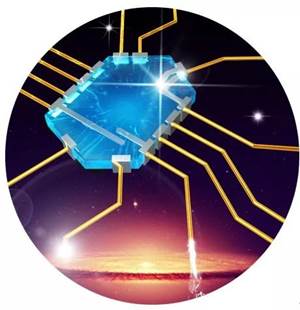A review article on organic single crystal electronics was published in Angewandte Chemie recently. The review was written by Dr. Hui Jiang from Nanyang Technological University and Prof. Wenping Hu from Tianjin Key laboratory of Molecular Optoelectronic Sciences, Department of Chemistry, School of Science, Tianjin University.
Semiconductors have become an indispensable part of people’s daily lives since they are in computers, telephones and other electronic devices.Single crystals of organic semiconductors are particularly intriguing because they are free of grain boundaries and have long-range periodic order as well as minimal traps and defects. Hence, organic semiconductor crystals provide a powerful tool for revealing intrinsic properties, examining the structure–property relationships, demonstrating the important factors for high performance devices and uncovering fundamental physics in organic semiconductors.

Organic semiconducting single crystals also have low-temperature processability, high flexibility, and low cost. However, organic semiconducting crystals are difficult to grow and the majority of them are irregular crystallites and nanocrystals. Meanwhile, organic crystals are sensitive to micro-processing methods such as electron beam and there are few available device preparation methods.
Prof. Wenping Hu’s research group has been persistently working in this challenging field. He invented a new method for growing organic semiconducting crystals such as “solution epitaxial”method and developed a bond and configuration controlled growth mechanism for organic semiconducting crystals. The research group has realized controllable preparation for organic one-dimensional, two-dimensional semiconducting crystals and organic co-crystals through the regulation and design of different molecular bond types (halogen bond, hydrogen bond, C-H, S-H, etc.) and configurations (molecular frameworks, branches,substituents, etc.). The research group testified the growth of organic semiconducting crystals abides by Gibbs-Curie-Wulff law and invented a series of new methods for preparing organic semiconducting single crystal devices. The research group also developed organic single crystal electronic devices, including field-effect transistors, phototransistors, p-n heterojunctions and circuits etc. By leading the research on organic two-dimensional semiconducting crystals, the research group has promoted organic semiconducting crystals’ application in electronic devices. Based on his research group’s years of hard work and the current international development, Professor Hu proposed a new research area called “organic single crystal electronics.”
Link to the review article: https://onlinelibrary.wiley.com/doi/10.1002/ange.201814439
By Ying Liu from the School of Science
Editors: Eva Yin & Doris Harrington






